I think it’s fair to say, our favorite digital nomad destination in Southeast Asia is Siem Reap in Cambodia. This small sleepy town, which is home to the world’s largest religious building, Angkor Wat, is the perfect blend of modern amenities and traditional Asia. That’s why we put together the Digital Nomad Guide to Siem Reap.
In fact, Siem Reap is so awesome that we’ve spent four years on and off in the city. It’s a brilliant location for digital nomads given the low cost of living, huge choices of restaurants and pubs, decent nightlife, and excellent Internet services. The only real drawback is the irregular power cuts, but finding accommodation with a generator can eliminate this problem.
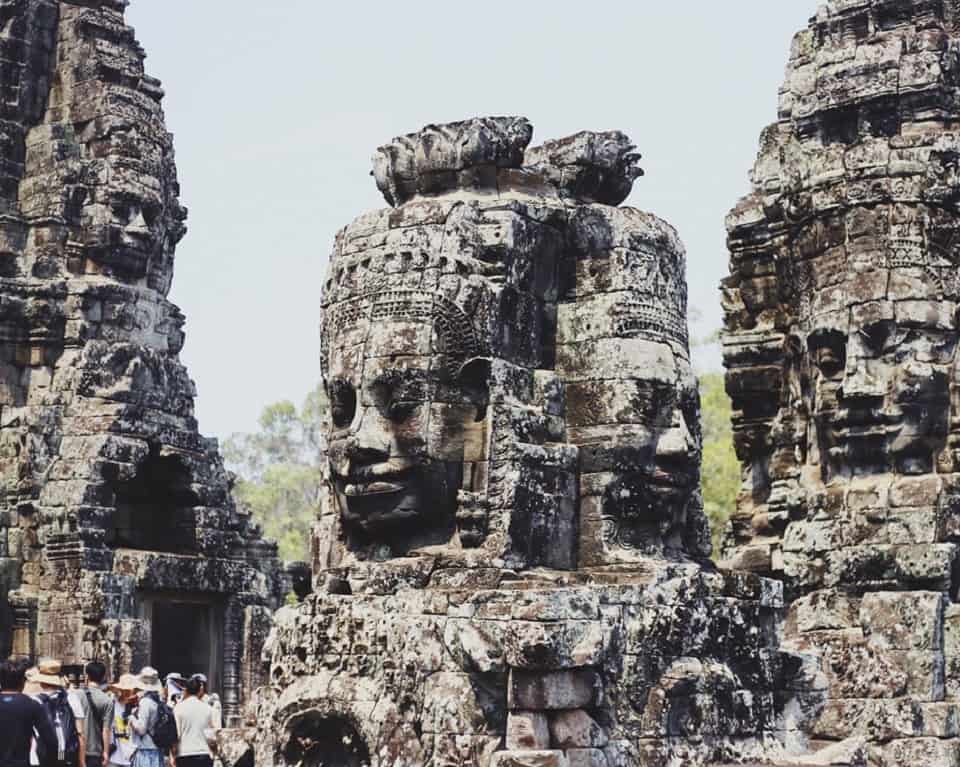
Table of Contents
How We Will Tackle Siem Reap
As with all our city guides (including this one for Chiang Mai), we will break this into two parts. The first part is a factual account of what it’s like to live in Siem Reap, and how you can get the most out of being there. We update this regularly by contacting friends still based in Siem Reap even when we’re not there.
The second part is based on our own experience and our own opinion of the city. This can be valuable, and it might not be; it’s up to you to decide whether our digital nomad experiences might reflect yours.
The Truth Of Being A Digital Nomad In Siem Reap
As this guide is fairly long, we’ve included a bunch of section headings so that you can skip over the things that you’re not interested in and stick to the things that you are.
Why Siem Reap For A Digital Nomad?
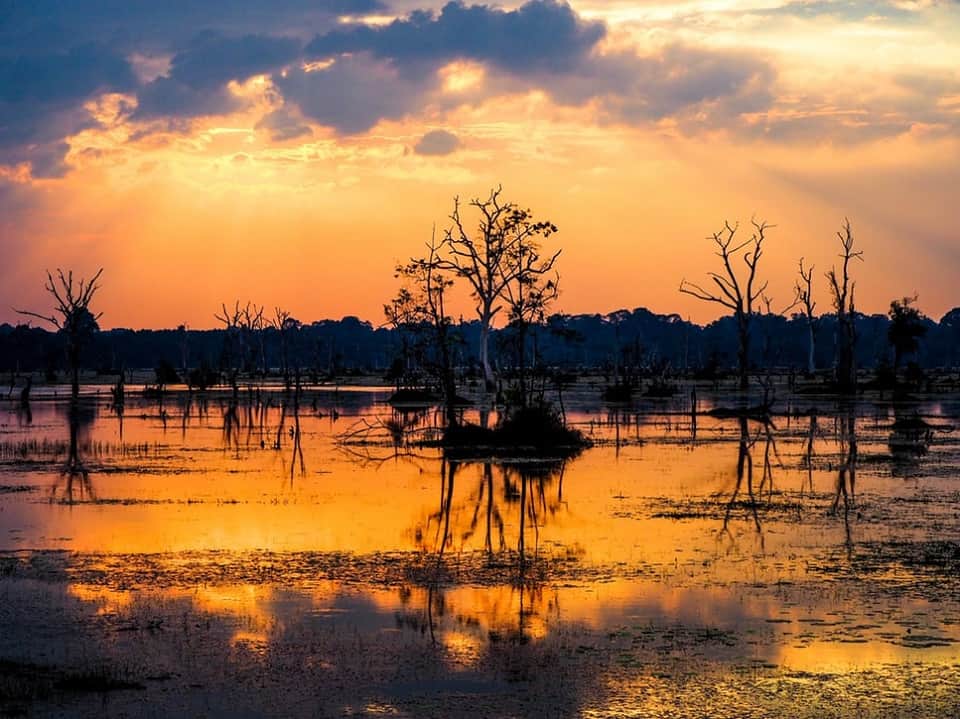
OK, let’s take a quick peek at why you should put Siem Reap on your “must visit” list:
- It’s inexpensive. It’s not CHEAP like say, Chiang Mai or Hanoi, but it’s not expensive either. What you save on food and beer, you’ll probably want to spend on upgrading your accommodation.
- It’s always warm. If you moved to Southeast Asia because you’re a little bit cold all the time, you’ll always be comfy in Siem Reap. It has two seasons: dry and rainy. They’re both warm.
- It’s the heart of Angkor and it has Angkor Wat. It is the only building in the world to be important enough to go on a national flag. Seriously, it matters.
- It has temples. Siem Reap offers a wonderful mix of ancient temples and modern ones. Wandering the city’s temples is an immense privilege if you like that sort of thing.
- It has culture. For a poor place, Siem Reap has plenty of things to see and do. From floating villages to well thought out museums, you don’t need to be bored.
- The food scene. If you have an international palate and want to eat great food, cheaply, then Siem Reap’s for you. Stay away from Pub Street’s tourist traps and the city is awash with great eateries.
- The expat community. A small and friendly community of long-term expats awaits you. You’ll find far fewer scammers and many more big hearts and real friendships in Siem Reap.
- Co-working is fine. It’s a small city but there are more than enough cafes and co-working spaces to go round.
Why Not Siem Reap As A Digital Nomad?
There are also a few reasons that Siem Reap may not appeal to you:
- It’s a bit poverty-stricken. Some nomads seem to go into shock when they see truly poor people for the first time. Cambodians are friendly, kind and funny but most of them are also living in real poverty.
- It’s dusty. When it’s not raining, it’s hot and the city seems to be permanently layered in fine dust. It’s not uncomfortable to breathe in but it’s probably not good for your lungs either.
- The nightlife is a touch limited. It’s not quite as bad as Chiang Mai thanks to a very good bar/pub scene but there are 3-4 nightclubs and that’s your lot. However, combine this with the cheapest drinks ever and you may not notice until you’ve been there for a year.
- You need to focus on personal safety and security more. If you live in a hotel or guarded complex life is easy in Siem Reap but if not, you need to take very good care over locking doors, windows and securing your belongings.
The Most Important Things To Know About Customs, Culture, and Language
Cambodia is full of quaint customs and traditions and unlike in its neighbor Thailand most of these customs if ignored will not bring huge amounts of offense. However, it is kind and decent to respect local traditions.
The most important of these traditions are as follows:
- You should never touch someone’s head. This is true throughout Southeast Asia in general as it’s the most sacred part of the body. Touching someone’s head is pretty much the same as asking somebody for a fight.
- You should never use your feet to touch things or to point at things. The opposite of the head is the least sacred part of the body, surprise, surprise. Using your feet can really cause offense.
- You ought to dress conservatively wherever possible. Khmer people aren’t sticklers for this, unlike their Thai counterparts. However, it’s particularly important to dress politely in temples, and women ought to cover their shoulders bellies, and thighs and men ought to wear trousers and shirts.
- Public displays of affection are frowned upon. Handholding is generally fine. But kissing and French kissing are a no-no. Anything more than that might get you sent to jail.
- You should never touch a monk. It is egregiously offensive for a woman to touch a monk. Never take a monk’s photograph without permission. If a monk asks for your seat, you should surrender it to them.
- Cambodia is full of “excellencies”. These are people in positions of high authority and power. Whatever you do, don’t upset these people. It could get you killed or worse.
- It is not a good idea to get angry. It’s also a very bad idea to interfere if people are fighting or speaking angry words. It might even get you killed.
Much of what passes for manners in Cambodia is common sense. However, it is worth reminding yourself that the rule of law is incredibly weak in Cambodia. And the people. in general. only offer respect when you show it in return.
Do You Need To Learn Khmer?
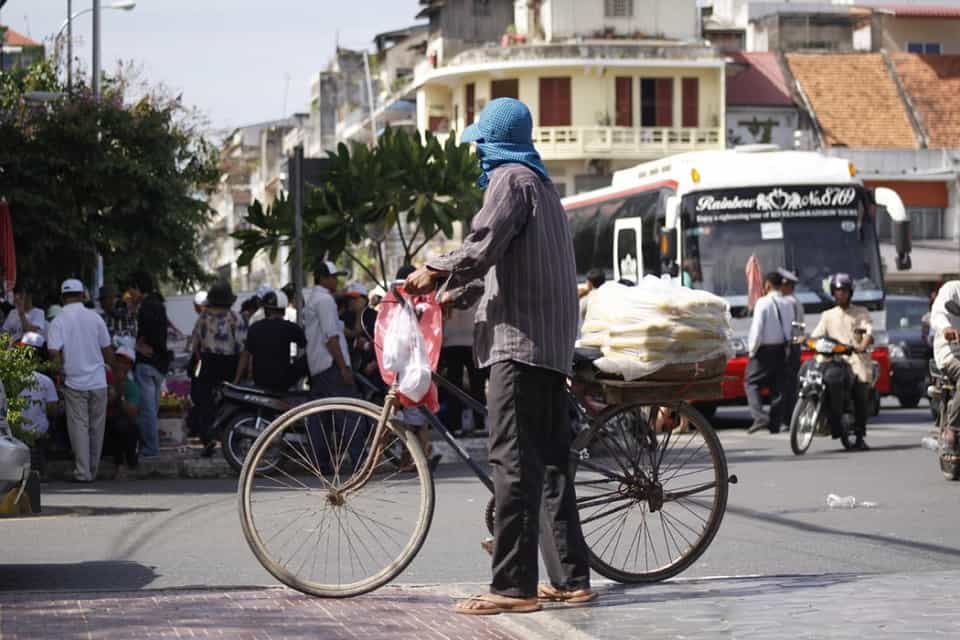
If you intend to live in one of the major towns of Cambodia, then it’s certainly not essential to learn Khmer. However, if you intend to spend much time in the sticks of Cambodia, then learning the language will be essential. Outside of major towns and cities, the level of English literacy is next to zero.
The best place to learn Khmer in Cambodia is in Battambang. The accent from that city is considered to be high Khmer. If you speak with a local accent from Battambang you will be understood and admired throughout the country.
It is worth noting that Khmer is not a tonal language (unlike all other major Indo-Chinese languages), but it does require extremely accurate pronunciation if you want to be understood. The Khmer alphabet is not written in an English script and is very complicated to learn.
There are some semi-official classes in the major cities but gaining any meaningful qualification Khmer is not yet possible. There is no education Visa for learning Khmer and the vast majority of people who learn Khmer do so with a private tutor.
Getting Around Siem Reap
Finding your way around Siem Reap is very easy, it’s a very small city and there are only a few forms of common transport.
The vast majority of people in Siem Reap make their way around by tuk-tuk. These tuk-tuks are very different from those found in Thailand, and in general, they are more comfortable, larger and the drivers more honest.
You can haggle with a tuk-tuk driver if you think their fare is extortionate but by and large, fares tend to be reasonable. If you want to visit the temples of Angkor, you can agree a day rate with your tuk-tuk driver and ensure that your spending is kept to a reasonable number.
Foreigners can ride motorcycles in Siem Reap but, technically speaking it is forbidden to rent a motorcycle. In practice, however, is quite easy to rent a motorcycle and it’s not too expensive. Unlike in Thailand, in Cambodia, motorcycle cycle rental tends to be fairly painless but you should never leave your passport as a deposit.
Taxis are a bit of a rarity. You may need to ask a friend to get a taxi’s phone number. In general, people in Cambodia tend to use taxis for InterCity journeys and beyond. The only exceptions to this tend to be to and from the airport and if you’re staying in a hotel or hostel, they can arrange this for you. You may pay a slight premium for this.
2023 Update: Taxi hailing apps are now available in Cambodia but tuk-tuks still represent the best value for money and most authentic experience.
The Postal Service in Siem Reap
The Postal Service in Cambodia is a funny thing. The Siem Reap post office can be found just along the river near the Raffles hotel. It is surprisingly efficient given that Cambodia is not famous for its efficiency in any area.
However, if you want to receive mail in Cambodia you need to rent a PO Box from the post office. This wouldn’t be a big deal, except for the fact, that there is a shortage of PO boxes.
In practice, it is easier to ask another long-term resident if you can borrow their PO Box and get your mail delivered to that.
When receiving post in Cambodia it is vital that you ask whoever sends you mail packages to include your phone number as the first line of the address, and that must be a local phone number. Otherwise, you will need to make regular trips to the post office to discover when your package finally arrives.
You will also have to pay a small fee to receive mail packages. It is worth noting, that if your package has a substantial value to it you may be required to pay duty. This is quite a big deal. As you may be required to visit Phnom Penh in order to pay for it.
If you are required to visit Phnom Penh to pay your duty, then it’s a good idea to remember that everything is negotiable in Cambodia even taxes.
Food In Siem Reap
Siem Reap’s food scene may be the best in Asia. This tiny little tourist town often plays host to 5 times as many guests as it has residents. That means there is an endless supply of restaurants and top-quality food throughout the city
Khmer food isn’t that interesting. However, there are several local restaurants that have built on Khmer food culture to offer something exciting and very different from Thai or Vietnamese cuisine.
Where the city really excels, however, is in the provision of international food. Great quality ingredients and incredibly low prices are the norm.
Two things to watch out for are Indian and Chinese food. The quality of these dishes is fantastic but the price? Not so much. They can be very, very expensive and you may decide to wait to visit China to spend this much cash.
Siem Reap is a fairly hippie-style town. This is good news for vegetarians and vegans who are well-catered to throughout the city. In fact, this may be one of the best places in Asia outside of Bali to eat vegetarian or vegan food.
However, what the city can boast of in restaurants contrasts directly with a fairly limited nightlife. This is not a party city.
How Much Will It Cost To Live In Siem Reap?
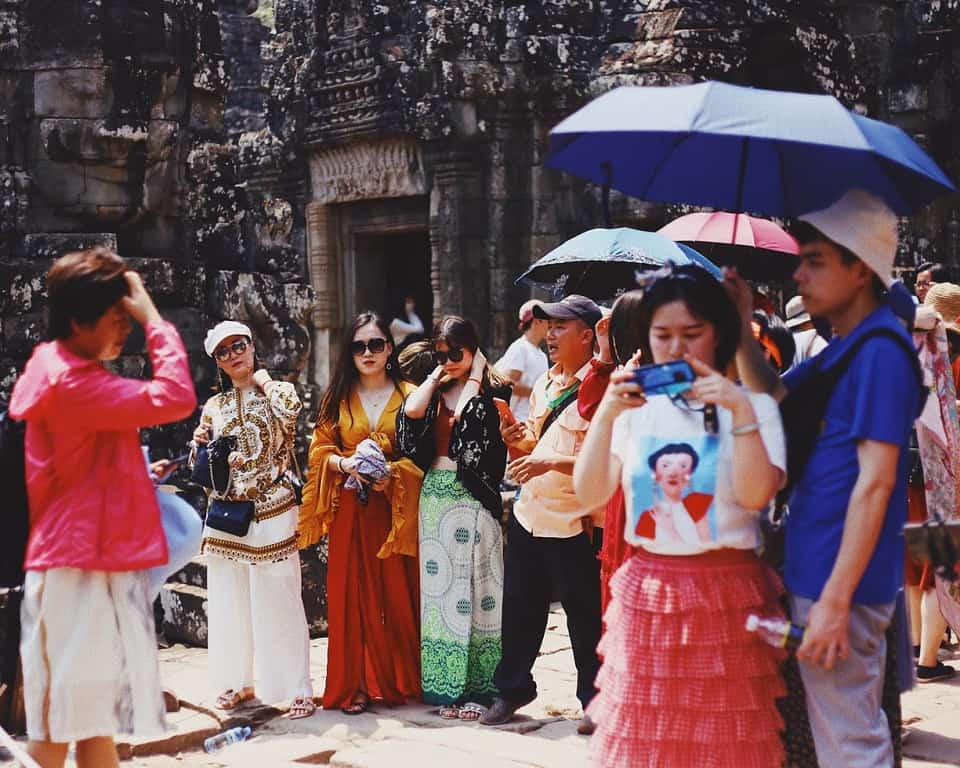
Siem Reap is generally a very cheap city to live in. However, before you get carried away and start thinking you can live like a king for $500, this simply isn’t the case. You could survive on this amount and in fact, we know a couple of barmen who have done it. But it’s a poor long-term strategy.
Surviving on these amounts would not be fun. Cheap accommodation in Cambodia is pretty crappy. You’ll find holes in the floor for a toilet, no air conditioning, and often bare concrete walls and floors with hardwood furniture and no cushions. It’ll be hot and uncomfortable.
Your food choices would be very limited as well, Cambodian food may be excellent value for money but there is much less ultra-low-budget food than there is in Thailand. Street food is not really a Khmer thing.
It’s also worth noting that Siem Reap is particularly poorly served by medical facilities and what is there, tends to be very expensive.
So, to be realistic about this we decided to lay out your options for the city and what you’ll need for short-term stays and for long-term stays.
Budget Planning For Siem Reap
Here’s a list of what you need for a short-term stay in Siem Reap:
- Room
- Food
- Water
- Toiletries
- Laundry
- Transport
- Wi-Fi
- Visa
- Onward ticket
Here’s what you need for a longer-term stay in Siem Reap:
- Room
- Food
- Water
- Clothes
- Laundry
- Toiletries
- Transport
- Wi-Fi
- Visas
- Some form of insurance
Let’s take a look at each of those in turn:
Room Costs In Siem Reap
My apartment in Siem Reap was not cheap. A one-bedroom apartment in a very nice complex, with a large swimming pool, and tiny gym, no cleaning, but with Wi-Fi and a generator came to $800 a month.
Electricity, water, and cleaning fees came on top. These will approximately be another $400 a month.
However, it’s worth noting that this was a 100 m² apartment. That’s pretty huge. It is perfectly possible to rent an apartment for about $300 a month if you want a western standard and about $150 a month if you’re happy to live at a more basic Khmer standard.
Therefore, the minimum spend for an apartment is going to be about $150 a month and you can pay as much as you like above that. While you may think my apartment was expensive, I had a friend spending over $3000 a month — there’s literally no limit at the top end.
2023 Update: Siem Reap currently has a huge oversupply of high-quality long-term accommodation, if you want to spend time in the city, now is a great time to get a bargain on rent.
Food Costs in Siem Reap
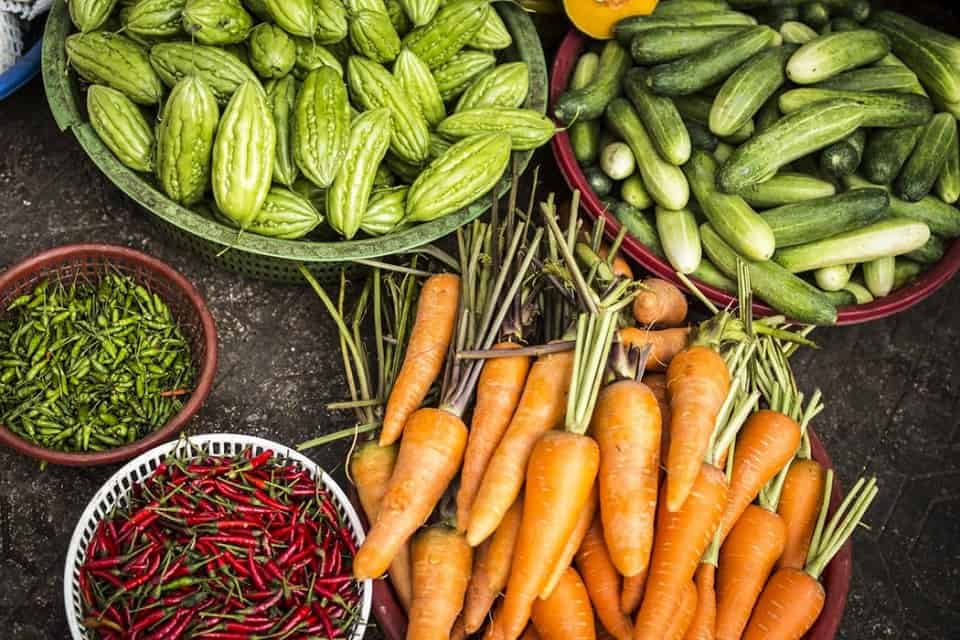
Whilst it is always true that you can live on a desperately unhealthy diet of pot noodles and spend almost no money anywhere in the world, that’s not how anyone can live sensibly and we’re going to discount it as an option.
Realistically, at the cheapest end of things, you are looking at 2 to 3 dollars a meal. That’s quite a bit more than you would expect to pay in Thailand. If you’re expecting a drink you need to add $0.50 or more to that.
From there, you can spend pretty much anything you like. We think you would find it challenging to spend more than $100 dollars per person on a meal in Cambodia. My average weekly grocery spend was around $100.
Therefore, your minimum spend, assuming that you’re going to eat all your meals out, is going to be about $90 a week and $360 a month.
Water Costs In Siem Reap
There may be a global water shortage but water is incredibly cheap throughout Southeast Asia. In Cambodia, we never had a water bill of more than five dollars a month. In general, you just pay the value of the water bill and the landlord adds no additional charges.
Unfortunately, you can’t drink tap water. It’s not even theoretically fit for human consumption and nobody in the city would drink it. It is entirely possible to contract amoebic dysentery from drinking water and heavy metal poisoning is also a reasonable outcome.
Fortunately, is very easy to buy drinking water and the simplest way is to give a motodop, that’s the term for a motorcycle taxi driver, a couple of bucks. They will bring you back a 5-8 gallon bottle of water which ought to last a couple a few days.
It is worth pointing out that the factories, which make this bottled water, are not entirely trustworthy and that we know of several people who chose to buy imported water at a much higher cost because they felt the local water was making them ill.
We reported no such symptoms ourselves and therefore we feel that your minimum water costs in a month going to be $5 for the water authority and no more than $10 for drinking water.
Soft drinks are available throughout the city. You will pay between $0.25 and $0.75 for a can of Coke or a similar beverage. You can get bulk buy discounts from any of the supermarkets in town. For some reason, diet drinks seem to attract a huge price premium and can be as much as twice the cost of their full-fat equivalents.
Clothes Costs in Siem Reap
Clothing is very cheap in the city. However, this is probably only good news if you’re the size of a Khmer person. It is possible to buy extra-large sizes, in Asian terms, of ultracheap T-shirts which will last approximately two washes before you need to replace them. But not much else.
Though for women, there are a few options around town that cater to Western women – guys are hugely underserved in Siem Reap.
There are several tailors in town but it’s worth noting that Cambodia is not famous for the quality of its tailors and it is something of a gamble to have bespoke clothing made in the city.
Online shopping in Cambodia is next to non-existent. For the vast majority of people, clothes shopping comes on a trip over the border into Thailand in the capital city of Bangkok. Given that this is a relatively cheap trip to make, though a somewhat time-consuming one — most people do it two or three times a year.
It is relatively easy to get tailor-made shoes in Siem Reap. These are relatively well-made and extremely fairly priced.
While I was there, I regularly ordered online from overseas services and I found the postal service to be completely reliable if somewhat slow in delivering my items.
Laundry Costs in Siem Reap
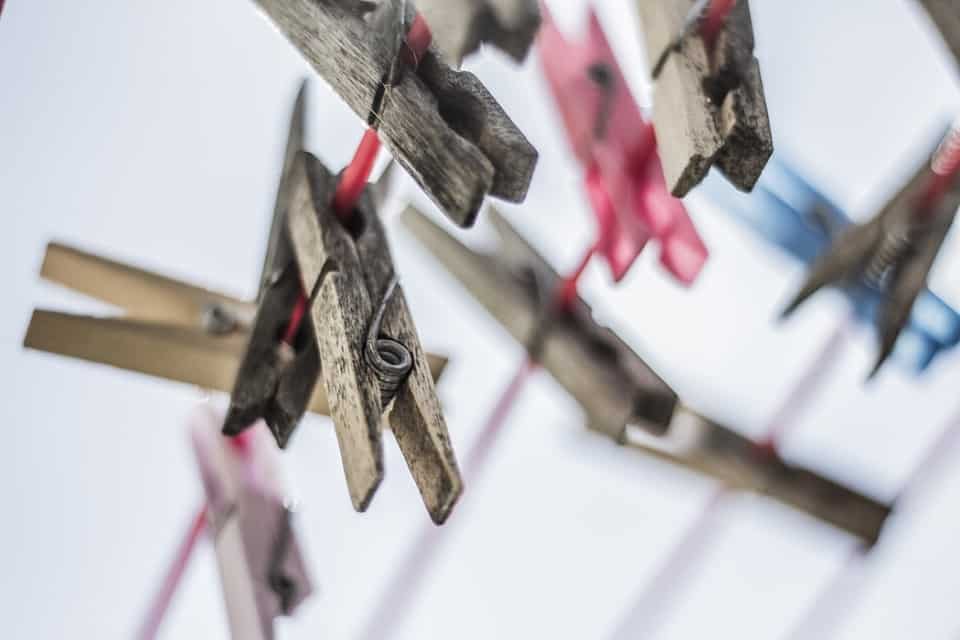
One thing you are going to love about Siem Reap is the cost of doing your laundry. There is a laundry service on every street corner and it’s dirt cheap. If you’re not too fussed about the quality of the service and expect to pay about one dollar per kilo.
However, if you want a Western-style service that includes ironing then you should expect to pay about three dollars per kilo. This is still a bargain.
Most rental accommodation will have its own laundry facilities, and these will not be coin-operated. So, you can always save a few bucks by doing your own laundry.
If you don’t have such a facility, you don’t have to pay someone else to do it, there is a genuine shortage of coin-operated facilities in the city but at $1 a kilo, who’s complaining?
We would note that it’s very rare for a laundry in Siem Reap to lose an item but if they do – you won’t be getting any compensation for it, except if you’re very lucky, you might get your next wash done for a discount.
Toiletries Costs in Siem Reap
Toiletries, wherever they are made, are quite cheap in Cambodia. You will certainly not spend any more money than you would at home.
However, there are no real luxury brands available in Cambodia and if you find any luxury brands they are almost certainly fake.
Unless you use an enormous amount of make-up each month you are unlikely to spend much more than $10 a month on basic toiletries in Cambodia.
Transport Costs In Siem Reap
Most people will buy a Moto in Cambodia and then sell it when they leave. Given that you can normally sell bikes pretty quickly on Facebook and sell them for what you pay for them; this is the cheapest way to own a motorbike in Cambodia.
It is also possible to rent motorbikes (even though, technically speaking, this is illegal) in Siem Reap. You’re not going to spend a fortune here, and unless you want a particularly powerful bike and you are unlikely to spend more than $100 in a month.
If you do rent a bike then it’s a good idea to have a license and insurance, and always use a crash helmet. Please note: we do not pay anything to go-fund-me appeals for nomads, tourists, ex-pats, or other idiots who crash without insurance or crash helmets in Cambodia or elsewhere.
However, in general, we never use a moto and just rely on tuk-tuks. A round-trip journey into town is normally about four dollars.
It’s not the most walkable city particularly given the heat from the majority of the year, but it is perfectly possible to walk if you want to, and walking down by the riverfront is quite pleasant.
We recommend a budget of about $100 a month for transport for most digital nomads in Cambodia.
Wi-Fi Costs In Siem Reap
Surprisingly, Wi-Fi availability is excellent throughout most of Cambodia. You will almost certainly find that your accommodation even at the ultralow budget end of things comes with free Wi-Fi.
However, given that power cuts are a frequent thing if you don’t have a generator then you may well need a backup Wi-Fi connection in the event of a power cut. This means using one of the local cellular phone services which are very cheap and very effective. Sim cards don’t cost much more than one dollar and a day’s Internet should cost no more than one dollar as well.
That means for the majority of nomads in Cambodia; you can spend less than $10 a month on Internet services.
However, be warned that Internet services for fixed-line are not that cheap if you want them to be reliable. If you do have to pay for your own connection, expect to pay at least $25 a month, and in Siem Reap we found ourselves paying $80 a month for a reliable connection. It pays to make sure the Wi-Fi is effective in your room before you agree to a contract.
When Traveling To Siem Reap From Outside Of Cambodia
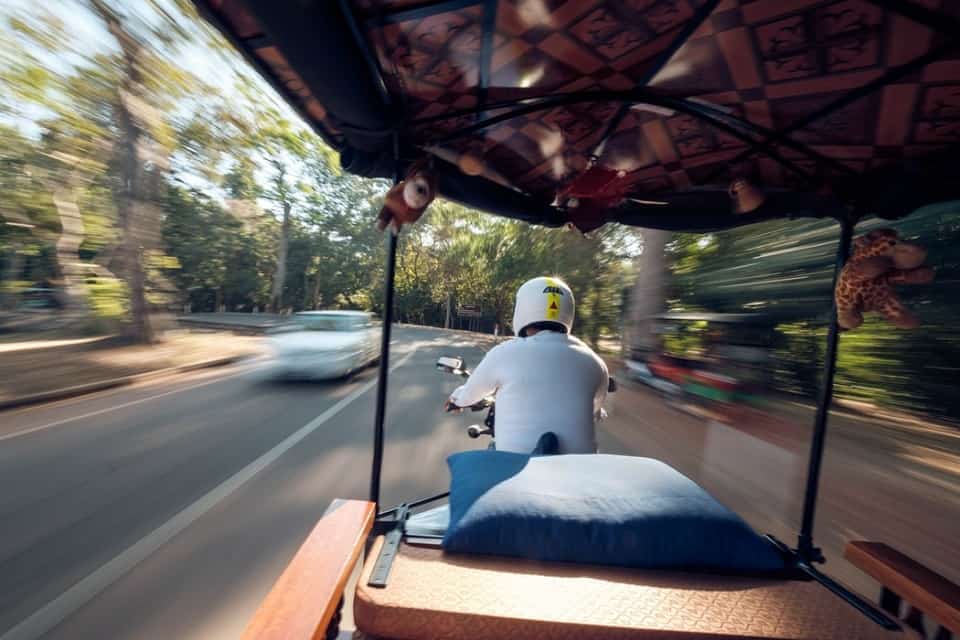
Traveling to Siem Reap from outside of Cambodia is not always straightforward or cost-effective. Until recently, the only flights into the city were Bangkok area from Bangkok and it was the most expensive short-distance flight in the world.
Fortunately, AirAsia now operates this route too and sensibly priced flights are now available. However, if you are traveling with large amounts of luggage from Bangkok, it can be very cost-effective to take a taxi to the border in a taxi on the other side of the border to Siem Reap. Just make sure that you use the services of the lovely porters to carry your bags across, hauling large suitcases up and down those stairs in the heat is no joke.
There is a bus available from Bangkok but unless you are absolutely broke, it’s a miserable journey that takes far longer than it should and stops at nearly every rip-off motorway service station possible between the two destinations. It is, however, very cheap.
Onward Tickets From Siem Reap
Unlike in Thailand, you are not required to have ongoing tickets when arriving in Siem Reap by air or by land. The truth is that Cambodia will welcome with open arms anyone who has the money to pay for their visa, with the exception of citizens from a very few African nations.
2023 Update: If you are from one of those African nations required to get a visa, the problems don’t end there, you will most likely be refused entry to the Kingdom of Wonder if you don’t have, at least, $2,000 US in cash on you when you arrive at the airport, You may also be forced to pay a fairly hefty $50 consideration to the officials to get in.
Also, unlike Thailand, you are not expected to have any minimum amount of money on you when entering the kingdom of Cambodia. Except, of course, in the instance highlighted above.
It is a good idea to remember that the unofficial currency and currency of current common usage is the US dollar and not the Cambodian Riel. You do not need to change any money into the local currency whatsoever. You may receive change in a mixture of dollars and Riel wherever you go, except out in the middle of nowhere where Riel become more important.
You may be pressured if you take the bus to pay for local currency and for visa convenience fees. You should refuse these offers. It’s cheap and easy to buy a visa at the border and there is no need to pay any additional fees. The exchange rates you get will be the worst that the country has to offer, bordering on theft.
Insurance in Siem Reap
Travelers to Cambodia would be wise to have both travel insurance and health insurance. When it comes to your health insurance policy, you should check to see that there is a med-evac clause which means that if you are seriously ill, the insurer will pay to evacuate you to another country of your choosing.
Cambodia is a terrible place to be if you are genuinely ill or in a serious accident. The nearest facilities that could be considered on par with what you are used to back home are in Bangkok.
Money Is Pegged To The Dollar In Siem Reap
One of the really nice things about Cambodia is that they work in the US dollar. That means if you’re paid in US dollars it’s very easy to see what kind of value for money you are getting and it means that there is no exchange rate pressure.
Of course, if you come from a European country or from Australia, Canada, New Zealand, et cetera then you will still have to deal with exchange rate pressure from the US dollar.
The Cambodian Riel is typically worth 4000 to 1 US dollar. This can fluctuate in a tight band but in practice; whatever the actual exchange rate is, most places will offer 4000 to the dollar.
Fun Costs Money In Siem Reap Same As Everywhere

Only crazy people expect to travel the world and have all their fun for free. Wherever you are in the world, fun costs money.
The good news is that fun in Cambodia is incredibly cheap even for those on very tight budgets you can buy beer in a local bar for about $0.50. You can buy a “happy pizza” for about five dollars. Most forms of entertainment are fairly low-cost.
2023 Update: While you can buy “happy” to take home with you, be aware that the police may arrest you for smoking it openly and the fine is $2,000 if you want to avoid jail. By all means, have a smoke, just do it discretely.
One exception to this rule that fun is cheap, is entry to Angkor Wat which is becoming progressively more expensive but is still incredible value for money. The fees do relate to how much it costs to maintain the attraction and preserve it for future generations.
However, much of the entrance fee is banked by a wealthy Khmer family and this is not going to change.
Notwithstanding all this if you don’t see Angkor Wat while you’re in Siem Reap, you’re missing out on one of the most amazing experiences Southeast Asia has to offer.
Getting Money Out of The Bank Costs Money Too
The good news about Cambodian ATMs is that if you’re working in dollars there will be no currency exchange fees. This can add up to a fairly significant boost to your income each month.
However, there are ATM fees to take into account and smart digital nomads will ensure that they arrange a bank account that refunds all ATM fees at home before they leave to travel the world.
PayPal is not available in Cambodia to receive funds but it can be used to make purchases. Western Union is a fairly common way of receiving money from outside of the country, and the local service MINT is the most common way of receiving money from inside the country.
Note: If you open a local account, you may find it frustrating to learn that Wise the digital nomad’s money transfer option of choice isn’t accepted by most banks in Cambodia if any.
Money Laundering Madness
It’s worth noting that as Cambodia is a notorious money-laundering destination that if you want to use a bank-to-bank transfer, even if you have a local bank account, your money must pass through an intermediary clearing bank in the United States.
This process is time-consuming and incurs two sets of bank fees. This means that the majority of expats or digital nomads will find using Western Union to be cheaper than using a bank.
In fact, I once had a client refuse to use the clearing bank to pay me because they felt it made them look like they were involved in money laundering. In the end, we agreed they would pay by Western Union. Which was fine by me.
Haggling In Siem Reap
It is perfectly acceptable to haggle throughout Cambodia. That is unless the prices are marked clearly on the shelf. In an independent retailer, not a supermarket, you may haggle if prices are marked but you are buying in bulk.
It is not acceptable to haggle in restaurants, bars, or hotels and your behavior might be taken as insulting if you try. If you try to haggle after you’ve eaten and drunk – then expect things to turn violent. Khmer people are poor and stealing from them is a poor tactic in their own country.
Khmers are usually not very good at haggling. If you know the approximate value of what you’re trying to buy at a market then the easiest way to haggle to that value is simply to name your price and keep repeating it until the local comes down to meet you.
(There may be a few stops along the way as they ask you to consider a higher price a few times but eventually – if you have the right number in mind, they’ll come down to where you are).
It is worth noting nobody will sell you a product at a loss. Bigger discounts tend to be reserved for customers who are buying multiple items.
Tipping in Siem Reap
Whilst it is true that tipping is not customary in Cambodia, it is generally expected that you will leave a small tip in tourist-focused establishments. The good news is that your server will either keep the tip or share the tip with the other staff members; it is very unusual for management to confiscate tips in Cambodia.
A tip of 1 to 2 dollars is perfectly okay in all but the fanciest of restaurants. In fancy restaurants, 10 to 15% is about right. Don’t tip like an American, you’ll just spoil it for the rest of us.
Saving Money With The Law
Cambodian corruption is a real thing. However, most digital nomads, tourists, expats are never going to encounter real corruption in Cambodia.
However, if you’re caught breaking the law on the road, you’re likely to be offered the chance to pay a small gratuity in order to make the matter go away. Given that this is like to be $10 or less, it’s probably smart to pay up.
If you don’t want to pay the police on the roads then obey the law, this includes having a local driving license, insurance, and yes, that crash helmet I keep going on about.
Oh, and whatever you do, don’t drink and drive. A motodop or a tuk-tuk is so cheap, there’s no need to risk dying to get home after a night out.
The Myth Of Two-Tier Pricing
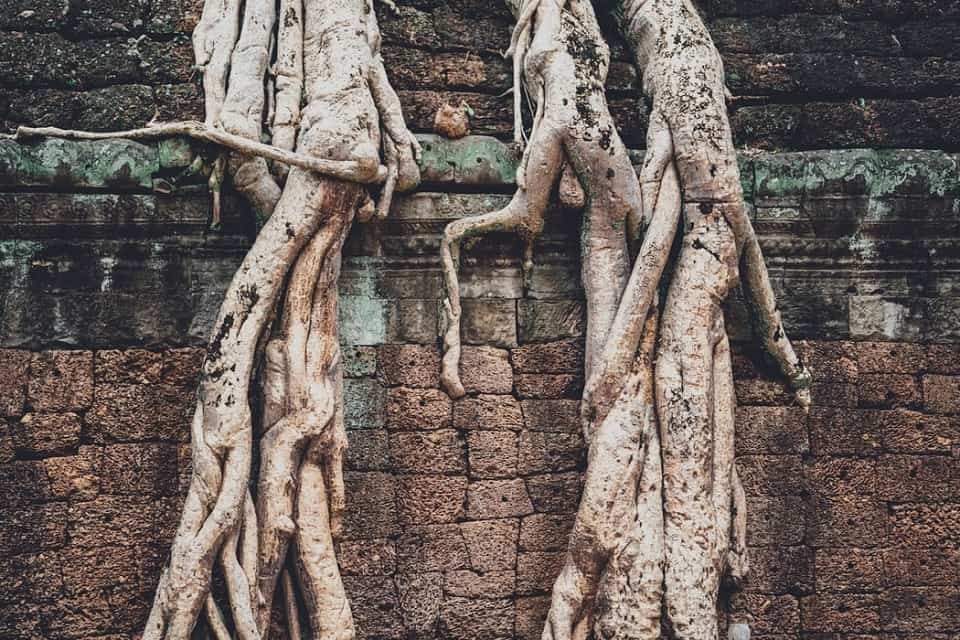
Everywhere that you go in Asia, you will find a certain group of expats and digital nomads convinced that the locals are colluding to make a two-tier pricing scheme that rips off foreigners and benefits locals.
In general, this is complete nonsense. However, there are a few local-only markets where the stallholders will try it on, and in the case of Siem Reap – the central market stallholders are complete thieves and unless you absolutely need something from there; it’s probably best to shop elsewhere.
Tuk-tuk drivers in the city are surprisingly honest and we never really had any problems with trying to rip us off. However, there’s always one and if you feel the price of your journey is unreasonable, feel free to haggle and if you’re not happy, walk away.
Note: there is a two-tier pricing system for Angkor Wat and other Buddhist monuments in Cambodia. Local people are free to enter at no charge. This is partly because Cambodians are so poor they wouldn’t be able to afford any charges and partly because they are religious buildings and Cambodians are generally Buddhists. This is not unreasonable.
Where Should You Live In Siem Reap?
Siem Reap is not a big city. That means unlike Chang Mai or Bangkok, there are only a few areas in town to live in. If you want to live close to where the action is, you want a place near Pub Street or on the Sok San Road. Neither of these locations is particularly desirable and it’s worth noting that they are prone to late-night noise and drunken tourists.
Otherwise, you can live out on the big hotel street running out towards the airport or on the other side of the river or even at the far end of the river. These areas are generally considered more desirable, but it is a little more effort to get into town for a night out. You’ll want to keep a tuk-tuk driver’s phone number handy.
I’ve lived in all these areas and none of them are particularly unsafe to live in or much more expensive than any other. However, if you want to live in high-end accommodation there is more choice in the out-of-town areas, and you will get more value for money.
A Lack Of Long-Term Nomads
There aren’t very many long-term digital nomads in Siem Reap, yet. This may be because the poverty of Cambodia frightens them. This is a shame because of all the destinations that we will review for NomadTalk this is one of the best.
That’s because it’s a small town with a solid core of expats, it has one of the brightest and friendliest communities of anywhere we’ve ever lived in the world. Combine that with one of the cheapest costs of living and an incredibly low tax environment, and you have an incredibly desirable place to live.
If you’re feeling lonely on your digital nomad travels; Siem Reap’s the place to go and make some friends.
Renting Is Super Easy In Siem Reap
Renting accommodation in the city is easy. You can sign a contract on any visa. It’s worth bearing in mind that if you sign a contract of fewer than six months then an agent receives no commission on the contract. Therefore, it is in their interest to pressure you to sign a longer contract.
What we found, is that landlords love to charge a bigger deposit for a longer contract. This makes no sense because they’re happy to write a short contract on a rolling one-month to one-month basis after the initial term. Therefore, it is in your interest to sign a short contract.
This conflict of interest left us facing an angry screaming and shouting Frenchman, who felt cheated out of his agency commission. Not our problem.
You can move in the same day if the landlord is okay with it and there are plenty of buildings to choose from.
One Minor Issue
The whole city is quite livable but be warned, burglary is rife in Siem Reap and Cambodia as a whole. Make sure that the place you choose is easy to secure, and ideally, it has some form of a security guard and can be locked up tight when you’re not at home.
Also, even when you are at home make sure to close and lock any windows and doors to the outside world even if you’re leaving a room for only a few minutes. One of our friends lost 15 computers to thieves when he left his home office to make a cup of coffee. Seriously, take care of your stuff.
If you’re super broke then this is probably not the city for you but you could, at a push, find somewhere to rent for under a hundred dollars a month and if you’re willing to share dormitory-style accommodation it might even be quite comfortable.
As with everywhere in Asia, the best neighbors (if you don’t already know the people, you’re going to live next door to, that is) are likely to be Korean or Japanese. They tend to be very polite and make very little noise and are easy to get along with. Though, they may choose to keep themselves to themselves.
How To Find Co-Working In Siem Reap?

Incredibly for a small city, Siem Reap has several co-working spaces. Angkor Hub is our favorite and it’s run by our friend Jeff who believes not just in providing a space to work in but also in a space where the local community can learn and grow.
That means part of the money you spend there will go to developing local talents and local businesses. We like that.
However, none of the co-working spaces are unpleasant and you may want to shop around to find the right crowd for you.
The Unofficial Attitude To Digital Nomads
Immigration in Cambodia doesn’t seem to give much of a toss about whether you work or not. Now, this isn’t to say some bright spark won’t eventually decide to crack down on co-working but for now, we think it very unlikely.
It is also, if you want to stay for a long time, very easy to obtain a Cambodian work permit and thus work completely legally.
There are no 24-hour co-working spaces in the city. It’s simply not big enough and the volume of nomads is not high enough to offer these kinds of facilities.
It would be possible to rent a large home in Cambodia and work from it without any harassment at all from immigration. That is as long as you don’t go around bragging about working illegally and thus, nobody rats you out to immigration.
Should You Be Vaccinated Before You Digital Nomad In Siem Reap?
As always, we have no time whatsoever for anti-vaxxer arguments. Cambodia is a proper third-world nation. Diseases such as cholera and typhoid may have been eliminated in your country, but they are relatively common here.
That means it is imperative that you get the vaccinations that your medical professional recommends before you visit Cambodia.
Diseases like hepatitis are not instant, in fact, the symptoms can take decades to show up. Any idiot offering anecdotal evidence of “when I went to Cambodia and I didn’t get sick” is an idiot – get your vaccinations or risk watching your liver fall out when you hit 50.
When Should You Be A Digital Nomad In Siem Reap?

Siem Reap is generally a pleasant place to be in all year round. There is no burning season, unlike Chang Mai, and you’re close enough to the equator that there are barely any seasonal differences. There is a rainy season and a hot season and they both are pretty hot.
It is true, that many guidebooks advise you to avoid travel in the rainy season – we arrived in the middle of the rainy season, and it was just fine. It was for the next three rainy seasons too.
Songkran, the Khmer New Year, takes place in April each year. However, while it may share the same name as the Thai festival which takes place at the same time — it is a much more restrained affair, and there are no water fights or water pistols to be seen.
Christmas is not a Khmer holiday. However, the Raffles Hotel Christmas brunch is a thing of legend and several of the other hotels in town offer great value all-you-can-eat drink packages for the day. The expats of the city love to go out and celebrate on this day you will only be alone if you choose to be.
How To Find A Gym In Siem Reap
There are plenty of gyms in the city. However, they are also incredibly basic. It’s fair to say that if you want top-notch gym equipment and you’re going to have to visit one of the five-star hotels and pay for a premium rate gym membership.
If you’re not so fussy, then a monthly gym membership will set you back no more than $20. It’s best just to walk around and find a gym with which you’re happy.
In general, nobody in the gym speaks English and if a piece of equipment is not working it may never work again or it may be repaired immediately, this is Cambodia.
Swimming pools are a bit of a rarity but if your building doesn’t have one there are still plenty of public pools in town. Be warned that Siem Reap’s dusty atmosphere can make swimming less fun than it might be.
Visas In Siem Reap
Everyone who arrives in Cambodia, apart from citizens of a handful of African nations, can buy a visa on arrival. This is just as convenient and easy as buying one from an embassy and much better value than buying one from a tout.
They are sold by immigration when you arrive, and they cost $35 for a tourist visa and $45 for an ordinary visa. They are only available in 1-month denominations.
You can extend a tourist visa by giving your passport to any travel agent in Cambodia, at least a week before it expires, and paying a small fee for a 1-month extension. Once this is up, you must leave the country (though you are free to re-enter the same day and buy a new visa as you do).
The OrdinaryVisa
If you buy an ordinary visa (which is often incorrectly referred to as a “business visa”) and you have not had one before, you can then extend this for 6-months (again using a travel agent) to a “looking for work” version of this visa. If you don’t find work – you must leave the country after 6 months. This costs less than $200.
You can return immediately after leaving but you cannot get another 6 months “looking for work visa” and will need to switch to a tourist visa or have a plan to turn your ordinary visa into a long-term employment version of the visa.
Speak to an agent in Siem Reap about the ways you can turn an ordinary visa into a work visa, quite legally, without getting an actual job. This will involve a fee and a letter and then you will be issued with a 1-year work visa plus a work permit. This will cost less than $1,000 and often much less.
The Retirement Visa
There is also a retirement visa available to those that meet the age and financial requirements. This can only be added as an extension to a 1-month ordinary visa and you cannot enter the country on a tourist visa if you intend to get the retirement visa. The retirement visa is a 1-year visa.
Single-month visas are single entry only. 6-month and 1-year visas are multiple entry.
Please note: If you travel to Siem Reap by land from Thailand, you will pass through Aranyaprathet as the last town before the border. There they will try and bully you into overpaying for a tourist visa by threatening that you will miss your bus because of the long wait. Ignore them, Cambodian visa issue is actually very fast and nobody has ever missed that bus to Siem Reap, because they delay it for hours to try and sell you an overpriced taxi journey on the other side. Also, don’t change any money into Khmer Riel in Aranyaprathet or Poipet – you’ll just get ripped off.
Visa Runs From Siem Reap
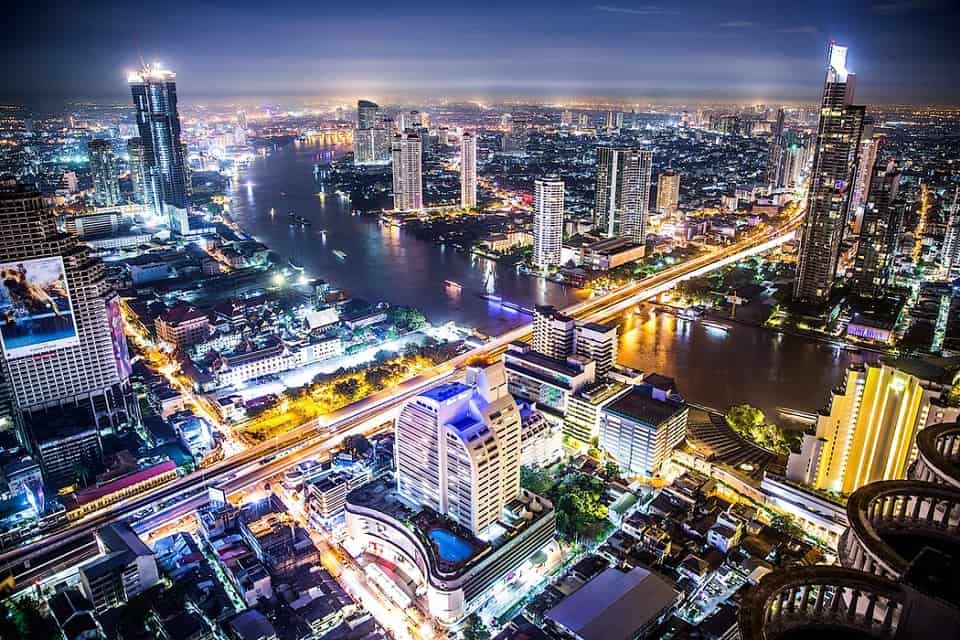
As you may have guessed by now, you don’t need to do a visa run from Siem Reap unless you buy a tourist visa on arrival. If you want to stay in Cambodia for a long period of time, it’s very easy to make this happen and just requires that you pay some fees to seal the deal.
If you do have to do a visa run, the only really practical option is a trip to Bangkok. You can get a bus, a taxi, or a flight to Bangkok easily and cheaply. You can also fly to Saigon for a sensible fee and a bus is cheap but takes an interminably long time.
All other destinations outside of Cambodia are going to be more expensive to access and will require stopping off in Saigon or Bangkok.
Be careful about crossing into Thailand, however, if you’ve stayed in the country for a long period of time on tourist visas or visa exemptions, or a combination of the two – you may be denied entry. Thailand is cracking down on long-term stays without proper paperwork.
Cambodia may not readmit you if the Thais refuse to stamp your passport. We can think of no fate in the world worse than being trapped in No Man’s Land in Poipet. Though we suspect that a $100 bill might persuade the immigration officer to change their minds in Cambodia.
The Best 5 Things To See In Siem Reap
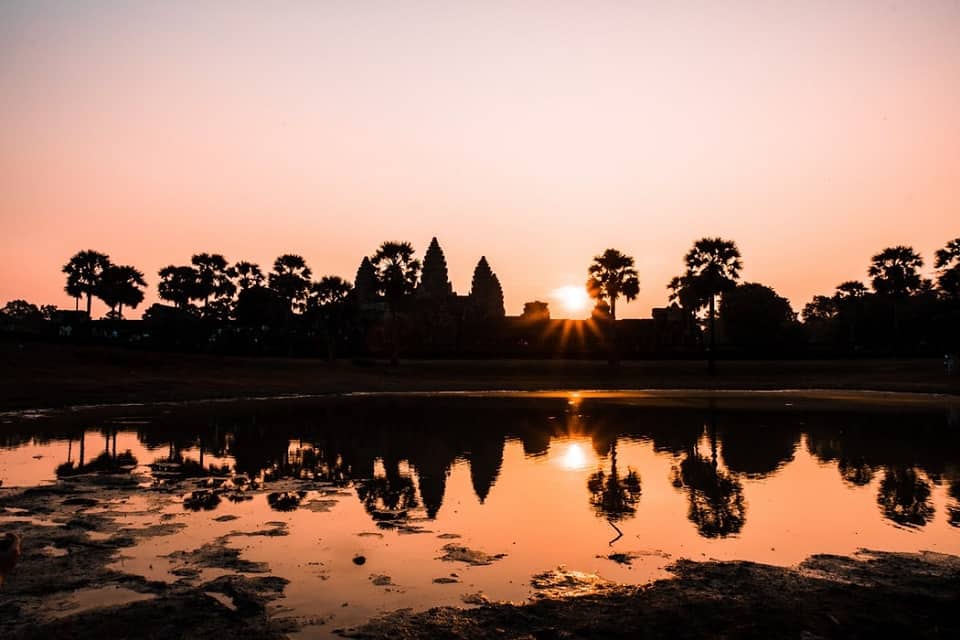
Well, if you got this far through, you must be interested in spending time in Siem Reap. So, let’s take a quick peek at the 5 best things to see/do in Siem Reap.
We’re not going to do what some of the tourist guides do and split the Angkor Temples out separately, we think there’s enough to put on your list without doing that.
Angkor Wat
If you only see one thing while you’re in Siem Reap it must be Angkor Wat. The world’s largest religious building was built in 38 years in the middle of a jungle, while Europeans were spending 300-400 years building cathedrals.
It’s majestic and amazing. So are the other temples in the Angkor National Park and we’d recommend that you see as many as you can. I’ve been to Angkor more than a dozen times and will never get bored of it. I’d go back tomorrow if I could. Hire a tuk-tuk for the day, agree on a route, and then endure the heat to see the incredible legacy of one of the most important empires in history that they never taught you about in school.
Pub Street
OK, it’s a tourist trap of epic proportions but everyone should spend at least one evening getting involved in Asia’s most ridiculous bar street. The drinks are cheap, the entertainment ranges from world-class to utterly appalling, and its two nightclubs are bastions of late-night debauchery.
The food’s not great but it won’t kill you and when you see what else Siem Reap has to offer, it’s all better than Pub Street. Angelina Jolie is a regular visitor to the area. You might even be able to drink the cocktail named after her if you search for it.
Floating Villages
The floating villages are both awful and awesome. I dislike human zoos and had to think hard before we put them on the list. The citizens of these villages are among the poorest people in an already poor country. They tend to be ethnically Vietnamese and are persecuted by the Khmer majority.
The villages are also a bit of a tourist trap and you may be hassled for donations (don’t give a penny – none of it ends up with the people who need it). However, it’s a unique insight into a way of life that will almost certainly be gone within a generation or two and that is why it makes our list.
The Landmine Museum
This is best combined with a trip to the “lady’s temple” of Angkor, Banteay Srey, which is a fair hike from Siem Reap but one of the most compelling and least visited temples of the national park.
The Landmine Museum is run by a former Khmer-rouge soldier who would go on to become CNN’s man of the year. His shame at his part in the horrors that befell Cambodia led him to dig landmines out of the ground and disarm them – without any training whatsoever.
Fortunately, the UN has now trained him and the Landmine Museum exists to fund his good works. Not only are you helping to demine the country (which still has a lot of mines thanks to both the Khmer Rouge and the Vietnam War) but also to support the orphanage that is run there.
He takes only real orphans (unlike many other orphanages in Cambodia) and only kids that no other orphanage will take (because they have severe issues like AIDs or leukemia which makes them “unprofitable” for other “charities”). Seriously.
If there’s one place everyone should visit other than Angkor Wat, it’s the Landmine Museum.
The Phare Circus
There’s something depressing about the number of basket-weaving charities out there that think if you teach every poor person on earth to make baskets, they’ll be economically safe. Instead of the reality which is nobody really wants to buy baskets in huge volumes.
Fortunately, the Phare Circus doesn’t teach Khmers basket-weaving they teach circus stunts instead. It’s not quite the Cirque Du Soleil but it’s very, very good and much cheaper and your ticket fees help alleviate poverty in Cambodia too.
Note: We could rave on about Siem Reap for a very long time and it’s kind of sad we’ve stopped at 5. We could have done 20 things or more, no problem. You won’t be bored in Siem Reap unless you choose to be.
Conclusion To Part 1 Of The Digital Nomad Guide To Siem Reap
Siem Reap’s a great place to be a digital nomad and for those interested in putting down roots, it’s a very easy place to live relatively unmolested by authority. Long-term visas are available and we’d say they were among the most affordable options in South East Asia alongside the Philippines. (Though if you don’t mind endless visa runs – Vietnam is pretty competitive too).
The co-working spaces are mainly run by good people trying to give something back to the community. We’d prefer that they upgraded the desks and seating in some of them but they’re all more than up to the task of supporting a few hours’ work, and the café culture is excellent and brings plenty more options for working productively out of the home.
Shopping sucks, on the other hand, and while you can get most of what you need in Siem Reap – almost everyone needs to get to Bangkok or another larger destination a couple of times a year to supplement things.
The nightlife’s better than in Chiang Mai but as a very small city, Siem Reap’s not going to keep you in parties forever.
We think Siem Reap is, overall, one of the best places to visit in Asia and a superb stop on a digital nomad’s tour of the region. It might be too much of a shock to the system to put it as your first place to be, but we’d strongly recommend that you spend some time in the city.
The Digital Nomad Guide To Siem Reap Part 2: Our Opinion Of Siem Reap
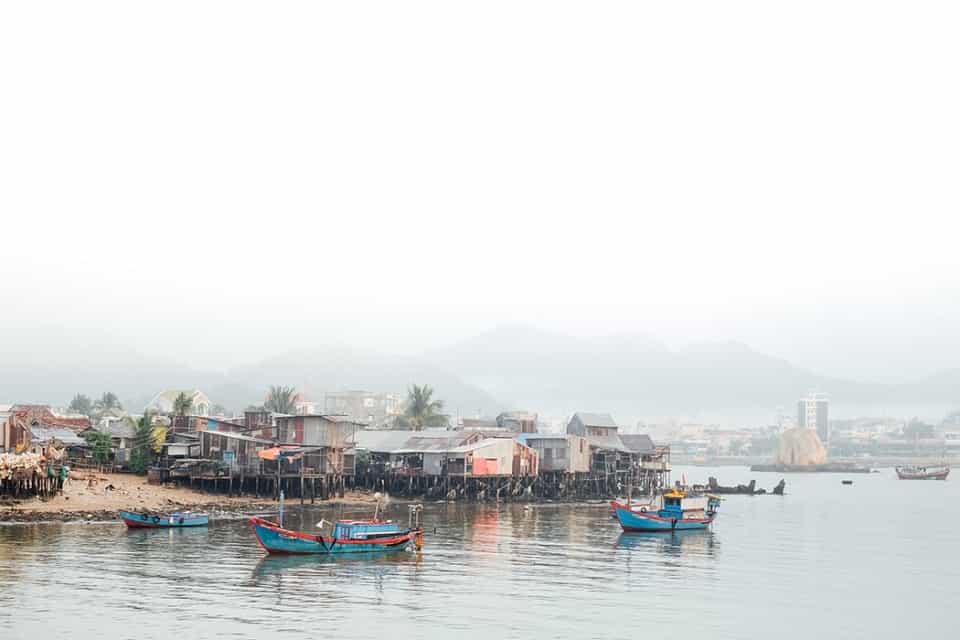
I have spent the best part of 4 years in Siem Reap and would be happy to go back again, and again, and again.
So, please keep in mind that what follows is an opinion and is based on long-term experience of the city.
It is, without a doubt, the best place to live in Cambodia if you want a combination of walkability, relative safety, facilities, and community. It doesn’t have as many party places as Phnom Penh but we find the disadvantages of Phnom Penh outweigh the advantages. Battambang is lovely but there’s not much there and we’d rather spend a month poking ourselves in the eye with a sharp stick than live in Sihanoukville.
The cost of living is very low apart from decent accommodation which comes at a premium, and electricity which is insanely expensive. All other costs are lower than most of the rest of the region thanks to a low tax regime.
Facilities
Angkor Wat has brought serious investment to Siem Reap there are endless hotels and restaurants competing with each other for your business. Bars where beer starts at 50 cents a pint and an endless procession of great massage venues where they actually sell massages and not happy endings.
From a tourism perspective, Siem Reap punches way above its weight for things to see and do, and while the town’s museums are not world-class – they’re very good for a nation that has only recently been removed from the “world’s least developed countries” list.
The town itself is attractive and while it’s a bit short on international brands. There are fast food joints and several international supermarkets where you should be able to find 90% of the things you miss from back home.
The Angkor National Park is the best thing to see in Indochina for my money alongside Ha Long Bay in Vietnam and Bagan in Myanmar. It may not be a “wonder of the world” but it ought to have been. You can see why it came top of CNN’s 100 things to do before you die list among many others.
Other Important Stuff
Khmer food culture was pretty much wiped out by the Khmer Rouge in the 1970s. It’s coming back but it’s nowhere near as varied as Thai or Vietnamese. However, there are some good Khmer meals to be had in town. It’s worth noting that it’s not as cheap as Thai or Vietnamese either.
This doesn’t matter too much because Siem Reap is a veritable hotbed of international options with a heavy emphasis on French and Italian but every food culture can be found somewhere in town. These meals are of a far higher standard in most places than they would be in Thailand or Vietnam AND they are much cheaper. The food in Siem Reap is awesome.
There isn’t much in the way of a “digital nomad scene” per se but only because people don’t brag about being a digital nomad in Siem Reap. There are plenty of people there working online and paying their way in life. The expat scene more than compensates for this and the expats are often highly knowledgeable and happy to share their knowledge with outsiders too.
Let’s Talk About The Negatives
I don’t really have any negatives to raise about Siem Reap. Sure, there are “developing nation” moments in the city but they exist throughout the region except in Singapore and it’s fair to say that Cambodia is a long way from “developed”.
I know that burglary and other petty crimes are common, but they didn’t affect me and once I’d worked out to stay in a building with a generator, neither did the occasional power cut. Choosing to stay somewhere safe is all it takes to make things very easy.
There are days when I miss the city very much, indeed. I made dozens of friends there and it’s a great place to kick back at the end of the day with mates and chill with a few beers.
It’s not a hectic mega-city and that’s fine by me too. It’s the ultimate in village life, really, and the one place in South East Asia where one day, everybody might know your name.
Where Next? The Last Part Of The Digital Nomad Guide To Siem Reap
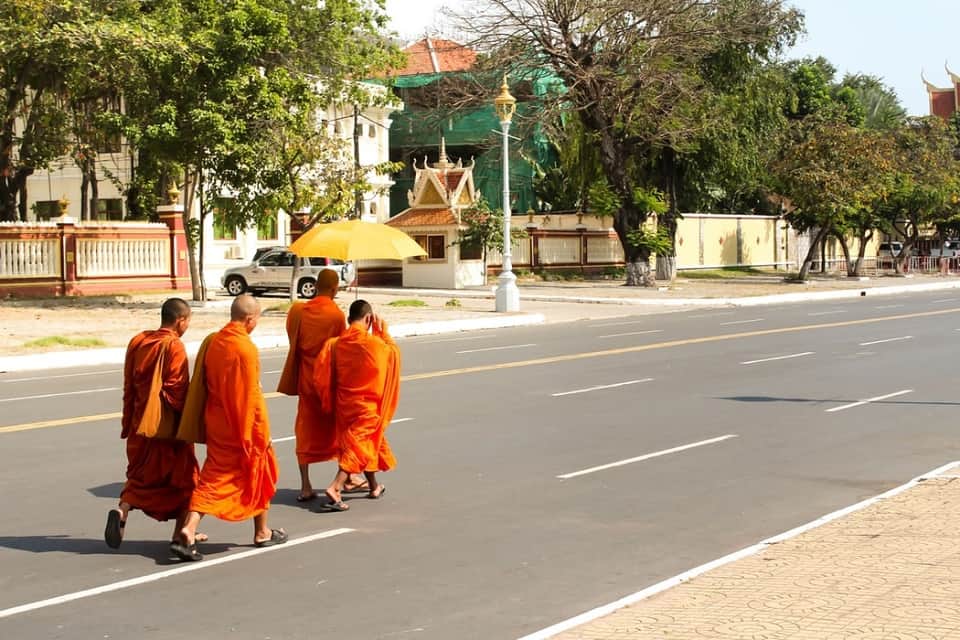
Moving on from Siem Reap offers two logical destinations – Phnom Penh and Bangkok. Battambang is also possible but let’s be fair unless you really want nothing but peace and quiet – Battambang is probably better done as a week’s break from Siem Reap rather than as a longer-term destination.
Bangkok is a few hours away by bus or taxi and a short (and now affordable) plane journey. Same for Phnom Penh (beyond which Saigon is a short bus journey too).
When I left Siem Reap for the last time, I headed to Bangkok before jumping on a plane to Chiang Mai for my first truly long-term stay in Thailand.
